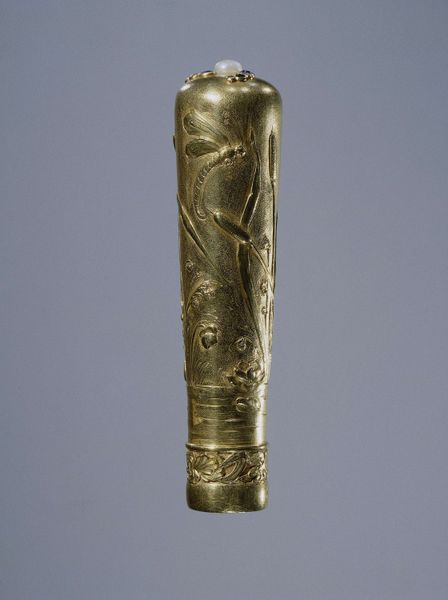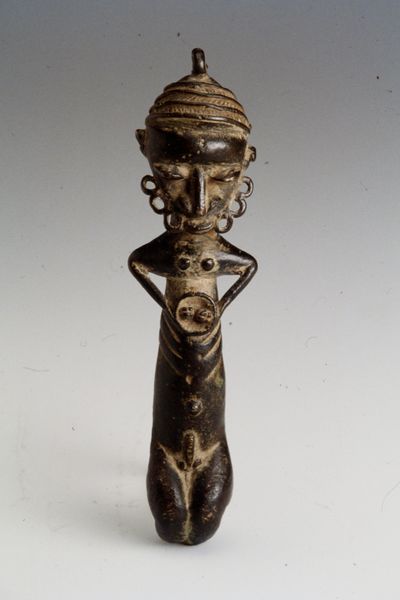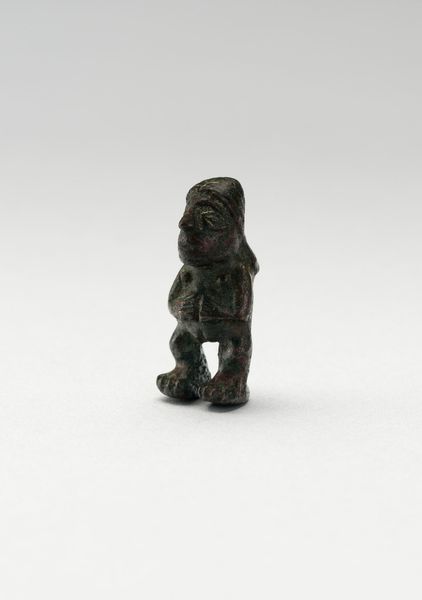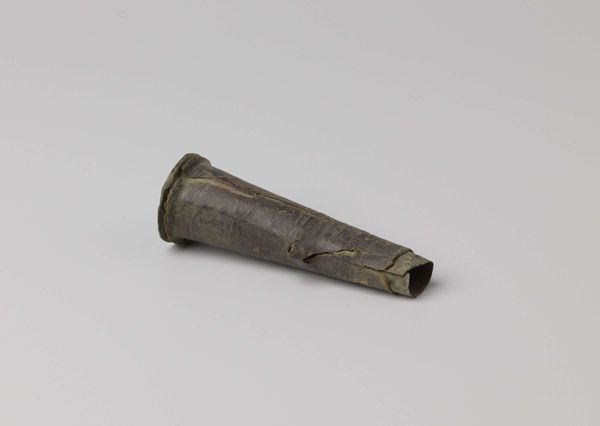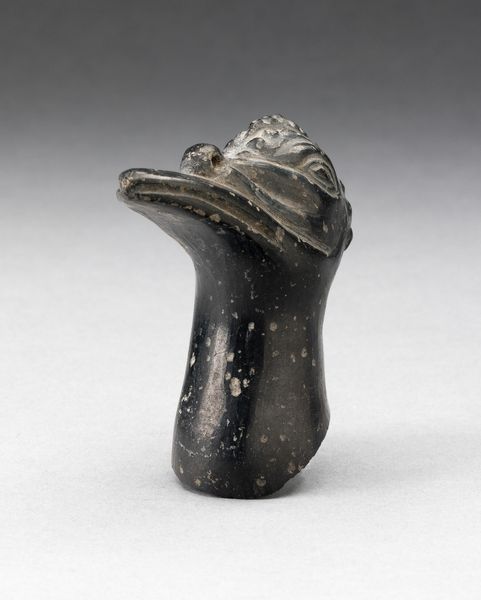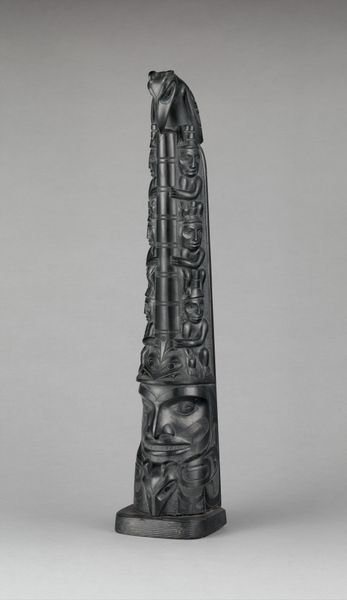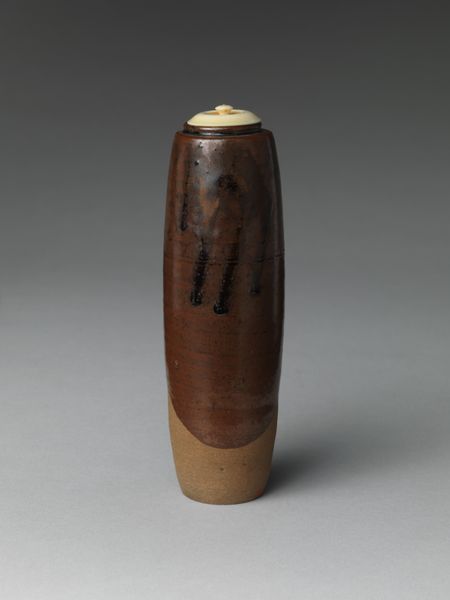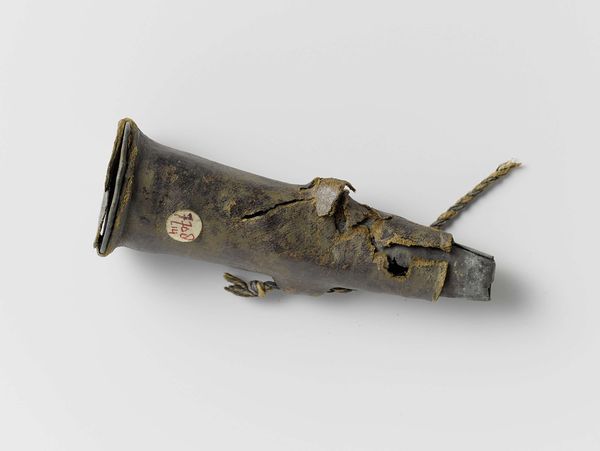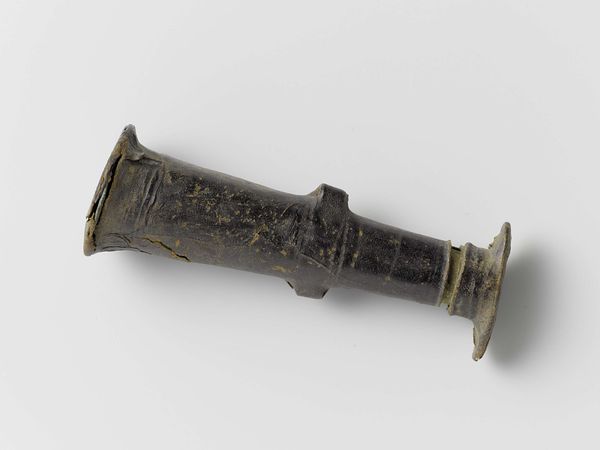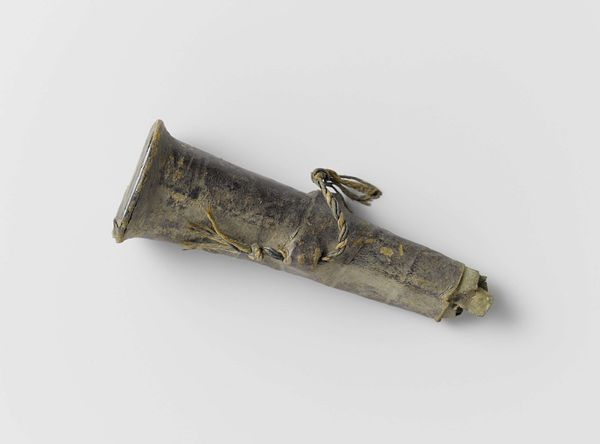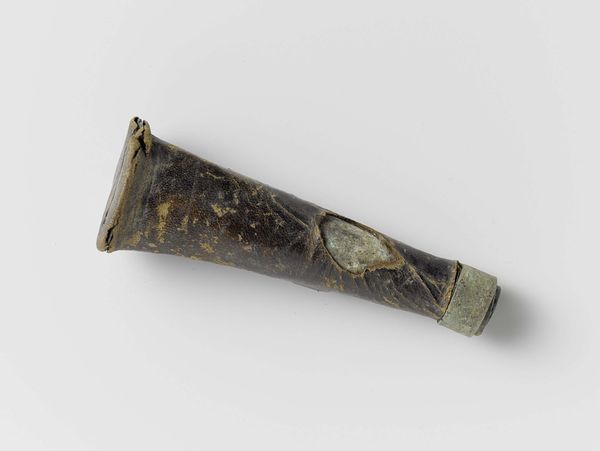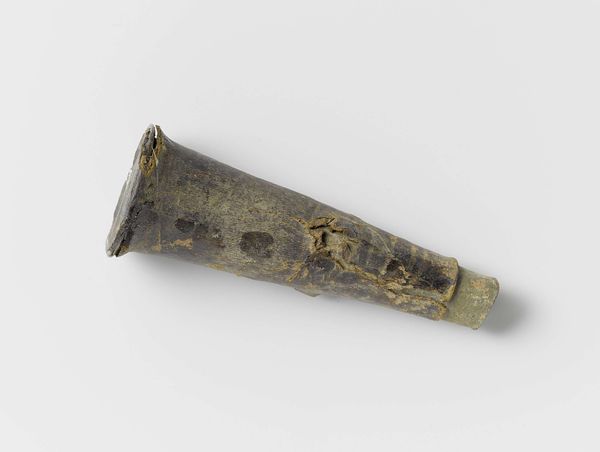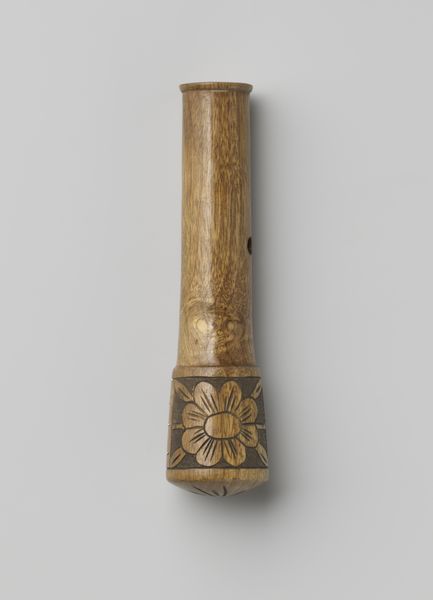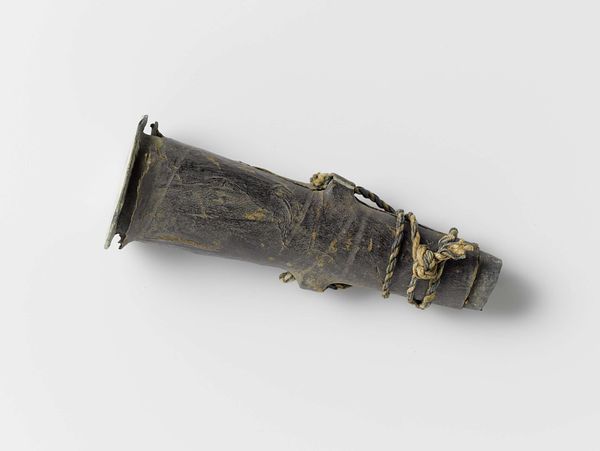
metal, bronze, sculpture
#
art-nouveau
#
animal
#
metal
#
bronze
#
figuration
#
sculpture
#
decorative-art
Dimensions: height 11.0 cm, width 3.3 cm, weight 131.0 gr, weight 86.0 gr
Copyright: Rijks Museum: Open Domain
This walking stick handle was made from silver by Bapst et Falize. During the late 19th century, the rise of industrialization led to a growing interest in craftsmanship, and artisans explored naturalistic motifs. Here, we see a detailed rendering of a snake and a rodent, perhaps a mouse, intertwined in a life-and-death struggle. The walking stick itself becomes a symbol of both power and vulnerability. This might remind us of the social hierarchies of the time, where class and status were visibly displayed. The cane itself was often a marker of the elite, a way of signaling one's position in society. Consider the emotional weight of this object. The tension between predator and prey is palpable, reflecting broader anxieties about survival. This walking stick handle invites us to reflect on the complex relationship between the individual and the natural world, and how such relationships are implicated in broader social and political structures.
Comments
rijksmuseum about 2 years ago
⋮
Close examination of this walking stick handle reveals the interwoven figures of a rat and a snake, both of which appear in the Japanese zodiac. The French silversmith drew his inspiration from Japanese netsukes, the carved toggles on kimono sashes. Netsukes could be made of many different materials. They were enthusiastically collected in France from 1860 onward.
Join the conversation
Join millions of artists and users on Artera today and experience the ultimate creative platform.
